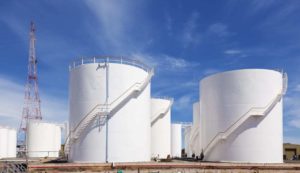Table of Contents
Radiographic inspection, a vital non-destructive testing (NDT) technique, empowers industries to scrutinise internal structures without causing damage. In this article, we delve into the remarkable world of radiographic testing, exploring its principles, applications, and advantages. Whether you’re an industry professional or simply curious about NDT, prepare to gain valuable insights into this cutting-edge technology.
Understanding Radiographic Inspection: Principles and Methodology
Radiographic inspection relies on X-rays to penetrate materials and produce images that unveil hidden flaws. The process involves directing X-rays through the specimen onto a sensitive film or a digital detector. Dense regions absorb more X-rays, appearing as dark areas on the image, while less dense or void regions allow more X-rays through, appearing as lighter regions.
The methodology of radiographic inspection can be broken down into two primary techniques: film-based radiography and digital radiography (DR). Film-based radiography is the traditional method, utilising X-ray film for image capture, while DR employs digital detectors, providing real-time imaging. Both methods have unique advantages, such as enhanced image manipulation in DR and cost-effectiveness in film-based radiography.
Applications of Radiographic Inspection in NDT
Radiographic inspection plays a pivotal role in a multitude of industries, ensuring safety, quality, and compliance standards are met. Some key applications include:
- Welding Inspections: Radiography verifies the integrity of welds, detecting defects like porosity, cracks, and incomplete fusion. It ensures welded components withstand the stresses they will encounter in their operational environment.
- Aerospace Industry: Critical aircraft components, such as turbine blades and structural elements, undergo radiographic inspection to identify internal defects that may compromise flight safety.
- Pipelines and Pressure Vessels: Radiography assesses pipeline and pressure vessel integrity, identifying corrosion, leaks, or cracks, and preventing potential disasters.
- Automotive Sector: Radiographic inspection ensures the quality of automotive parts, ranging from engine components to airbag inflators, safeguarding passenger safety.
- Power Generation Plants: Inspecting components like turbine blades and heat exchangers helps prevent failures and accidents in power generation facilities.
Advantages of Radiographic Inspection in NDT
Radiographic inspection offers numerous advantages that make it a preferred NDT method in various industries:
- Non-Destructive Nature: Radiography allows for thorough examination without damaging the component, saving time and cost compared to destructive testing methods.
- High Sensitivity: It can detect even tiny defects, ensuring precision and reliability in identifying flaws.
- Internal Visibility: Radiographic inspection provides a comprehensive view of internal structures, revealing hidden defects that may not be visible externally.
- Versatility: It can be applied to a wide range of materials, from metals and composites to ceramics and polymers.
- Quantitative Analysis: Modern digital radiography enables precise measurement and analysis of flaws for accurate assessment.
Boosting Safety and Quality with Radiographic Inspection
Radiographic inspection has revolutionised the NDT landscape, offering unparalleled insights into the inner workings of materials and components. Its ability to detect flaws before they escalate into catastrophic failures enhances safety and ensures the highest quality standards are met.
By incorporating radiographic inspection into their quality assurance processes, industries can rest assured that their products and infrastructure will not only meet regulatory requirements but exceed expectations, ultimately leading to enhanced customer satisfaction and loyalty.





